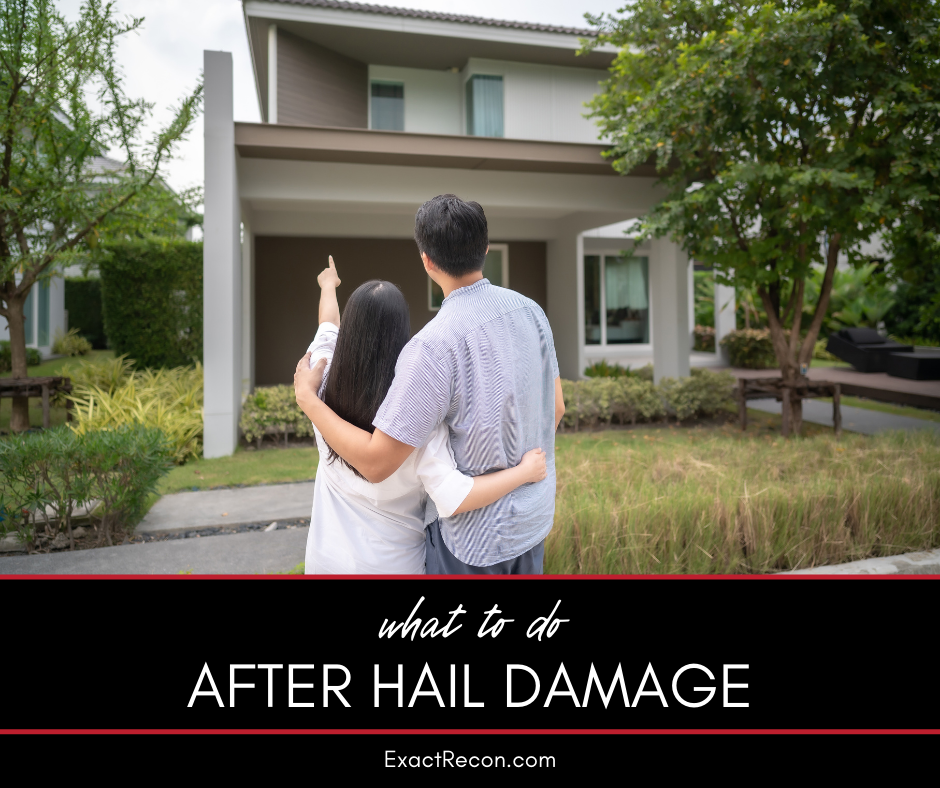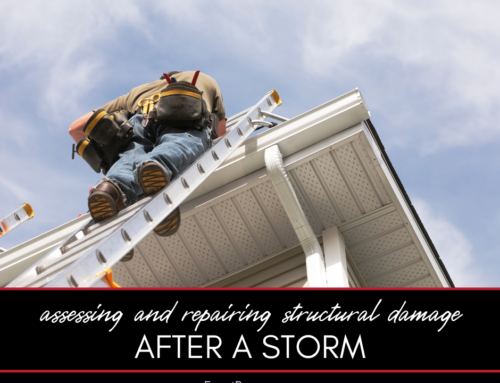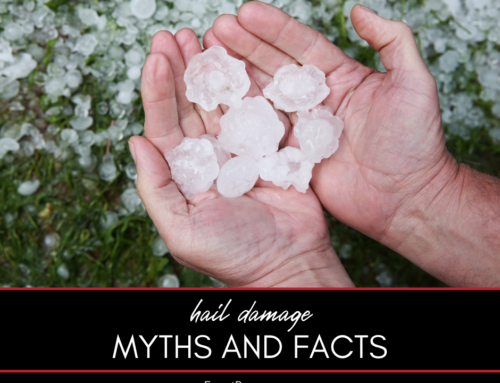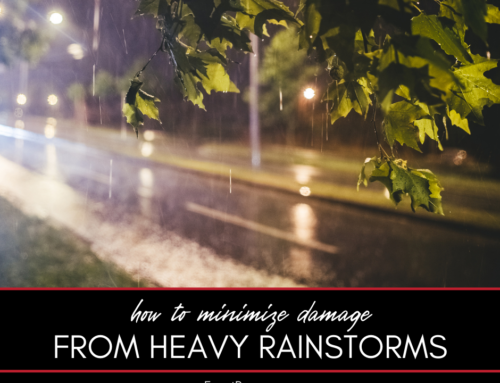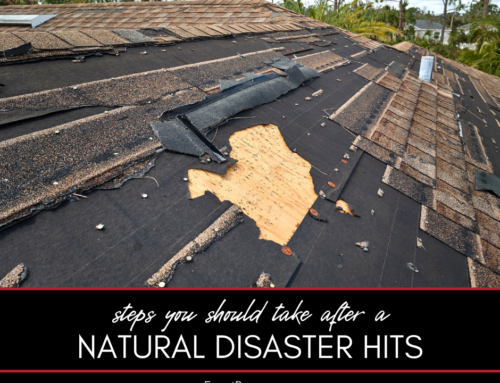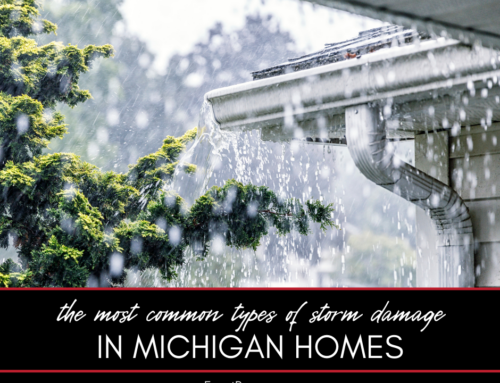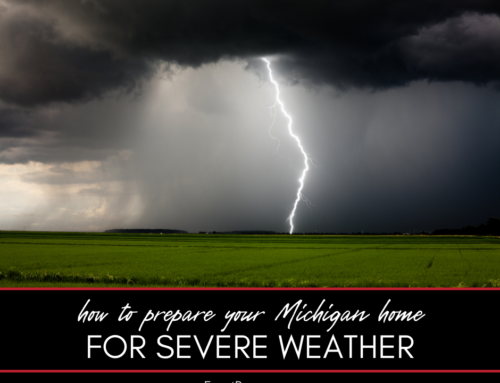Hailstorms can cause significant damage to your home, from dented siding to broken windows and roof damage. Knowing what to do after hail damage can help you protect your property and ensure that repairs are handled correctly.
What to Do After Hail Damage
Hail damage can be extensive and requires immediate attention to prevent further issues. This guide explains the following:
- Assessing hail damage
- Immediate steps to take after a hailstorm
- Documenting damage for insurance claims
- Common types of hail damage and how to address them
- The importance of calling a professional for hail damage restoration
- Preventative measures for future hailstorms
Here’s a closer look at each.
Assessing Hail Damage
After a hailstorm, it’s essential to assess the extent of the damage to your home. Start by walking around your property and looking for visible signs of damage. Check the roof for dented or missing shingles, as well as any visible holes or cracks. Examine the siding for dents, cracks, or holes. Inspect windows for broken glass or damaged frames. Look for any damage to outdoor structures, such as sheds, fences, and decks. Don’t forget to check your gutters and downspouts for dents or clogs caused by hail.
Related: Expert tips for dealing with water and fire damage, mold and more
Immediate Steps to Take After a Hailstorm
Safety is your top priority after a hailstorm. Ensure that everyone in your household is safe and accounted for. Avoid walking on the roof to inspect for damage, as it can be slippery and dangerous. If there are any broken windows, cover them with plywood or plastic sheeting to prevent water from entering your home. Secure any loose or damaged siding to prevent further damage. If you suspect structural damage or have any concerns about the safety of your home, evacuate and call a professional for a thorough inspection.
Documenting Damage for Insurance Claims
Proper documentation is crucial for filing insurance claims after hail damage. Take clear photos of all visible damage, including close-ups and wide shots to capture the extent of the damage. Make a list of all damaged items, both inside and outside your home. Note the date and time of the hailstorm and any other relevant details. Contact your insurance company as soon as possible to report the damage and start the claims process. Provide them with all the documentation and follow their instructions for filing a claim.
Related: Creating a disaster preparedness kit for your home
Common Types of Hail Damage and How to Address Them
Hail can cause various types of damage, each requiring a different approach for repair.
Roof Damage: Hail can dent or crack shingles, leading to leaks and structural issues. It’s essential to replace any damaged shingles and repair any holes or cracks. In some cases, a complete roof replacement may be necessary if the damage is extensive.
Siding Damage: Hail can dent or crack siding, compromising the exterior of your home. Repair or replace damaged siding to prevent water intrusion and further damage.
Window Damage: Hail can break windows and damage frames. Replace any broken glass and repair or replace damaged frames to ensure your home remains secure and weatherproof.
Gutter Damage: Hail can dent and clog gutters, leading to drainage issues. Clear any debris from the gutters and repair or replace any damaged sections to ensure proper water flow.
Outdoor Structure Damage: Hail can damage outdoor structures like sheds, fences, and decks. Inspect these areas for damage and make necessary repairs to maintain their integrity.
The Importance of Calling a Professional for Hail Damage Restoration
While some minor repairs can be done yourself, it’s often best to call a professional for hail damage restoration. Professionals have the expertise and equipment to thoroughly assess the damage and perform necessary repairs correctly and safely. They can also identify hidden damage that you might miss, ensuring that all issues are addressed. Hiring a professional can save you time and prevent further damage, as well as provide peace of mind that your home is restored to its pre-storm condition.
Related: How to salvage your belongings after major home damage
Preventative Measures for Future Hailstorms
Taking preventative measures can help minimize damage from future hailstorms. Regularly inspect and maintain your roof, siding, and gutters to ensure they are in good condition. Trim trees and branches near your home to prevent them from falling during a storm. Consider installing impact-resistant roofing materials and storm shutters to protect against hail. Ensure that your yard has proper drainage to prevent water from pooling around your foundation. Stay informed about weather conditions and have an emergency plan in place for your family.
FAQ About Hail Damage
Check out these commonly asked questions about hail damage. If you don’t see your question here, please call our office and we’ll find you the answers you need.
How Soon Should I Inspect My Home After a Hailstorm?
You should inspect your home as soon as it is safe to do so after a hailstorm. Prompt inspection can help you identify and address damage before it worsens.
Will My Insurance Cover Hail Damage?
Most homeowner’s insurance policies cover hail damage, but it’s important to review your policy details. Document the damage and contact your insurance company to start the claims process.
Can Hail Damage Lead to Roof Leaks?
Yes, hail damage can lead to roof leaks if shingles are cracked or missing. It’s essential to repair or replace damaged shingles to prevent water intrusion.
What Should I Do If I Find Broken Windows After a Hailstorm?
If you find broken windows, cover them with plywood or plastic sheeting to prevent water from entering your home. Contact a professional to replace the glass and repair any frame damage.
Related: Restoring your business after a natural disaster
How Can I Prevent Hail Damage in the Future?
To prevent hail damage, regularly inspect and maintain your roof, siding, and gutters. Trim trees and branches near your home, and consider installing impact-resistant roofing materials and storm shutters. Ensure your yard has proper drainage and stay informed about weather conditions.
Do You Need a Disaster Remediation Expert in Washtenaw County or Jackson County?
If your home has already been damaged, we can help. Check out our services and call Exact Recon for your free disaster remediation quote today. We offer:
- Water damage restoration
- Fire damage restoration
- Mold removal and remediation
- Fire and smoke restoration
- Sewer cleanup and disinfecting
- Reconstruction
- Wind and storm damage repair

